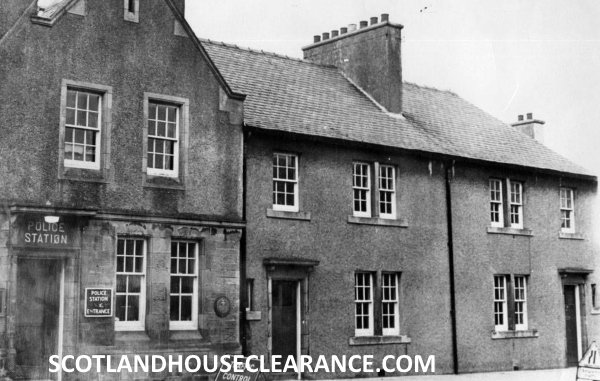
The following antique vintage photograph was acquired during a house clearance & unwanted by the families or owners of the properties cleared.
Thurso history/ facts
Thurso was established by Charles I in 1633.
Originally Thurso went by the name of ‘Tarvudobron’ meaning ‘Bull Water’.
In 1649 Thurso was under attack by Donald Macalister Mullach, and was chased off by the towns residents that were led by Sir James Sinclair.
One of Sir James Sinclair’s former servants killed Donald Macalister Mullach.
By 1811 Thurso had a population of 3462 people.
In 1955 a nuclear power plant was established in Thurso, this caused the population to increase.
Thurso was known for its manufacturing and production of woollen cloth and coarse linen.
One of the oldest churches in Scotland dated from 1125, is the Old St Peter’s Church and is located in Thurso.
In 1854 on a five acre site, the Thurso combination poorhouse was built. After years of it being abandoned it was later sold in 1924 by the combination.
The common breed of sheep in Thurso are the Leicester and Cheviot.
In 1870 the Thurso Town Hall was built and a library established by 1872.
Thurso high street was named Princess Street due to the visit of the Prince and Princess of Wales in 1876.
By 1880 a new gas works was built to supply Thurso.
In 1882 by the Duke of Edinburgh, the Dunbar hospital foundation was laid in Thurso and the money to build the hospital was donated by Alexander Dunbar.
The castle of Mey in Thurso was built in the 1500’s by the fourth Earl of Caithness, later the castle became derelict.
In 1952 when the Queen Mother visited Thurso, she bought the derelict Castle of Mey and had it restored and can now be seen today.
The Castlehill Harbour in Thurso was built to serve the quarry in 1824.
In 1858 Sir J G Tollermache Sinclair bought two lots of ground, on this ground a church was built known as the ‘North Free Church’, it was destroyed by fire and was built again four years later.
